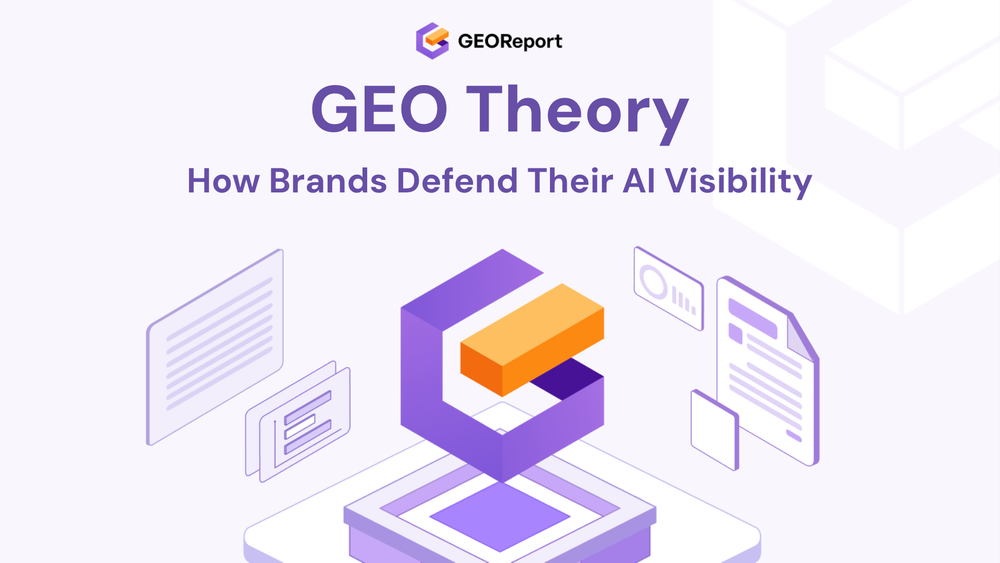BLUF:
Traffic can be bought, but AI authority must be earned. Generative Engine Optimization (GEO) gives brands a new kind of moat, one built on structured trust, semantic clarity, and consistent credibility signals that AI systems can interpret, cite, and defend.
Why “AI Authority” Isn’t the Same as SEO Authority?
In traditional SEO, visibility was transactional, rank high, get clicks, build backlinks, repeat. But AI doesn’t operate in transactions, it operates in reasoning.
Large Language Models (LLMs) don’t rank results the way Google does. They reason through content, context, and credibility before producing an answer. This shift emphasizes the growing importance of AI authority.
That’s why the old SEO playbook, keyword stuffing, backlink farming, traffic chasing, doesn’t create visibility in AI search. It simply doesn't build the kind of AI authority that LLMs now value.
To truly thrive, content creators must focus on establishing genuine AI authority, becoming a trusted source that LLMs can rely on for comprehensive and accurate responses. This new paradigm for visibility is all about demonstrating your AI authority through deep, credible, and contextually rich content.
The shift is clear:
- SEO rewards optimization.
- GEO rewards interpretation.
In this new environment, a brand’s strength is not how much traffic it drives, but how deeply AI systems trust its meaning.
How AI Models Reward Trust, Not Trends?
AI doesn’t chase trends, it identifies reliability patterns. When LLMs like ChatGPT or Gemini generate answers, they don’t simply fetch the most popular content, they surface what’s most consistent and coherent across multiple contexts.

This means a brand’s authority inside AI depends on three layers of trust:
- Structural Trust: Whether your data is clean, crawlable, and machine-readable.
- Interpretive Trust: Whether your expertise and tone align with factual, verifiable information.
- Behavioral Trust: Whether your content and brand signals remain consistent across the web.
When all three layers align, AI doesn’t just cite you, it remembers you. That memory becomes the beginning of your GEO moat.
What Makes GEO Authority Compounding?
Unlike SEO rankings, GEO authority doesn’t reset with every algorithm change.
Once a brand earns recognition across AI models, that recognition compounds.
Here’s why:
- AI memory is cumulative. Each time your content is cited or referenced in generative outputs, it reinforces your entity’s credibility.
- LLMs learn in context. They reference your past mentions, schema, and tone consistency as signals of reliability.
- Authority snowballs over time. One accurate citation often leads to others across models, building a durable reputation layer.
In GEO, visibility compounds through trust loops, not traffic spikes.
That’s why early movers in AI visibility, even small ones, can establish dominance that’s hard to displace later.
The Building Blocks of a GEO Moat?
Creating a GEO moat isn’t about publishing more content, it’s about making every piece count in AI reasoning.
The foundation includes:
- Entity Precision:
Every mention of your brand, author, and product must align across web, social, and structured data. AI can’t trust what it can’t recognize. - Schema Consistency:
Your content must be machine-readable. Missing or broken markup breaks trust faster than poor copy ever could. - E-E-A-T at Scale:
Experience, Expertise, Authoritativeness, and Trustworthiness aren’t checkboxes, they’re the framework AI uses to gauge truth. - Semantic Clarity:
Use natural, unambiguous language. AI models prefer clear, instructive tone over keyword-heavy text. - Cross-Model Monitoring:
Visibility across ChatGPT, Gemini, Claude, and Perplexity must be tracked and compared. Each model uses different retrieval and reasoning patterns.
When combined, these elements turn your content ecosystem into something AI can both understand and defend.
Case Study: How Challenger Brands Build GEO Defensibility?
We’ve observed this pattern repeatedly in GEOReport audits. Smaller, structured brands often outperform legacy giants in generative visibility.
For example, when users ask, “Which skincare brands use sustainable ingredients?”, Google’s top results show L’Oréal and Clinique. But ChatGPT and Perplexity often highlight smaller DTC brands like Byoma, Youth to the People, or Versed.
Why? Because these challengers communicate in the format AI prefers:
- Schema-backed product data.
- Transparent ingredient lists.
- FAQ-style pages answering real user intent.
- Consistent brand tone across all platforms.
AI reads structure, not status. That’s why GEO favors precision over scale, and why small teams can build durable visibility moats faster than enterprise players that rely solely on backlinks.
How GEOReport Quantifies and Strengthens the Moat
Understanding GEO is one thing, measuring it is another. That’s where GEOReport.ai comes in, it transforms abstract AI visibility into measurable AI authority.

GEOReport helps you:
- Measure Entity Confidence: Track how confidently AI systems identify and recall your brand across different models.
- Audit Structured Data: Detect schema gaps, broken markup, or inconsistent entities that block AI comprehension.
- Evaluate E-E-A-T Signals: Quantify how experience, expertise, and trust are reflected in your content.
- Benchmark Competitors: Understand why others get cited first and uncover the trust signals behind their visibility.
- Monitor Multi-Model Mentions: See exactly where your brand appears (or disappears) in ChatGPT, Gemini, Claude, and Perplexity.
GEOReport doesn’t just show your standing, it builds your trust architecture across the AI ecosystem.
Why GEO Is the New Competitive Advantage?
In the SEO era, authority could be manufactured, backlinks could be bought, rankings gamed. In the GEO era, AI authority is earned and reinforced through authenticity, structure, and clarity.
This means that GEO isn’t just another marketing tactic, it’s a defensible moat.
Once AI systems associate your brand with credible, structured information that AI authority association becomes self-reinforcing, much harder for competitors to replace or replicate. In short:
- SEO builds reach.
- GEO builds resilience.
And resilience is what survives every algorithm, update, and AI revolution.
The Future: AI Authority as the New Brand Equity
As AI-powered discovery replaces traditional search, brand equity will be defined by interpretability. It won’t matter how many people know your brand, it’ll matter how many models understand it.
In this future, every brand will need two forms of visibility:
- Search visibility -> for human discovery.
- Generative visibility -> for AI recommendation.
GEO is what bridges them. It turns brand presence into machine confidence, ensuring that your reputation isn’t just visible, it’s verifiable.
FAQs
What is a GEO moat?
A GEO moat is the layer of AI authority a brand builds through consistent credibility and structured trust signals. It’s what prevents competitors from overtaking you in AI visibility.
Can small brands build a GEO moat?
Yes. GEO rewards structure, clarity, and credibility, not budget size. Early adoption can help small teams earn long-term AI authority faster than large incumbents.
How long does it take to build GEO authority?
Unlike SEO, which fluctuates with updates, GEO authority compounds gradually. Consistent structure and credibility over 3–6 months begin establishing durable AI recognition.
How can I measure AI visibility?
Use tools like GEOReport.ai to track citations, schema health, entity consistency, and model-specific brand mentions across ChatGPT, Gemini, Claude, and Perplexity.
Author's Viewpoint
In the early web, backlinks were your moat. In the AI era, your moat is how well machines understand and defend your credibility.
The brands that treat GEO as infrastructure, not marketing, will own the next generation of visibility. Because in the age of generative search, authority isn’t given, it’s engineered.


